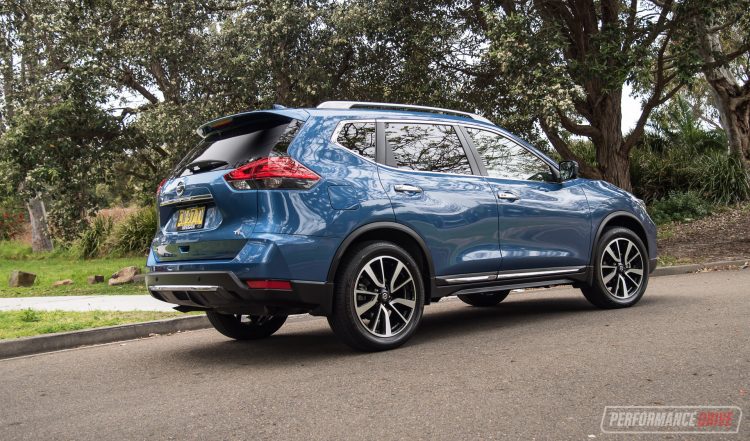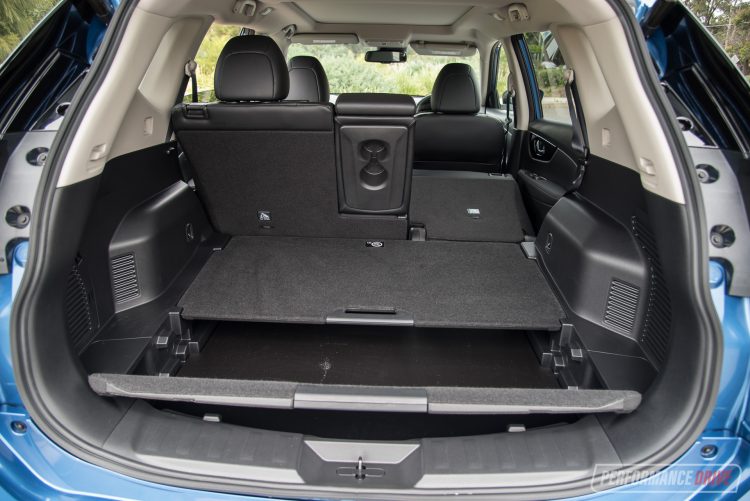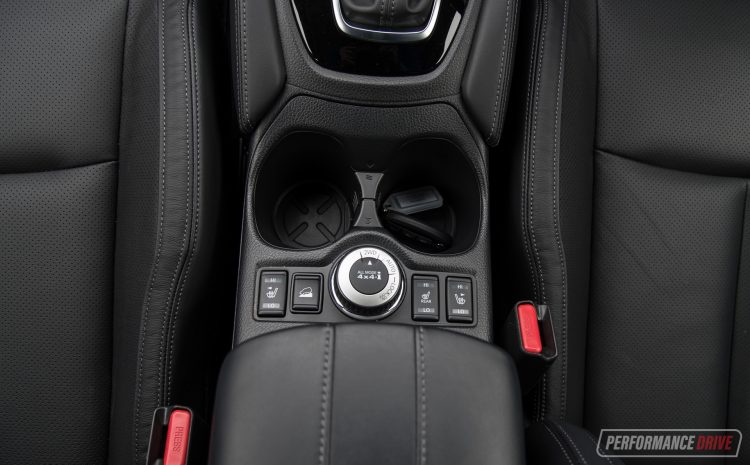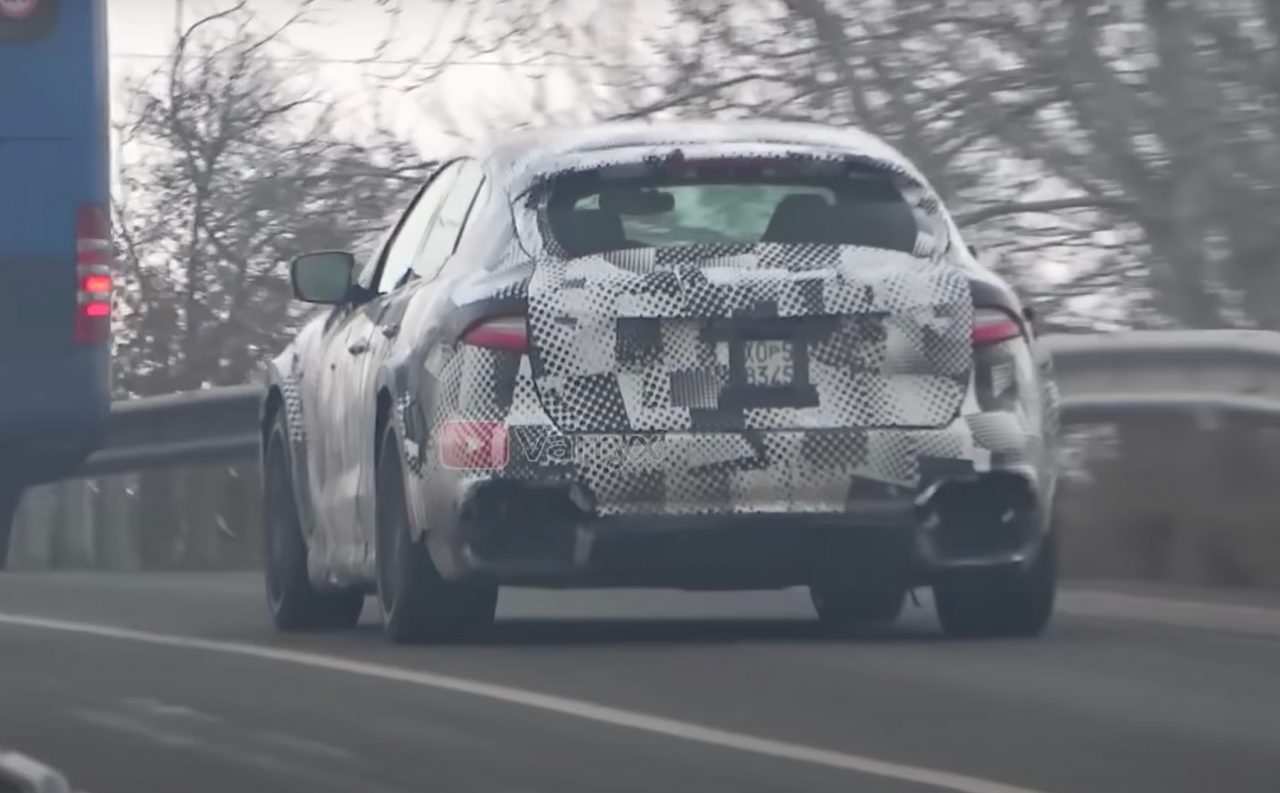Nissan has fermented a fine success story in the medium-size SUV market. Over the years, the X-Trail has become well-known to the people for its primeval design, attractive price, and competitive interior space. The current generation is coming towards the end of its lifecycle though, with an all-new model due in 2021. But before that arrives, let’s see if the current version is still relevant and worthy.

There is a huge list of configurations to choose from, which includes two-wheel drive and four-wheel drive, 5-seat and 7-seat layouts, two petrol engines and a diesel engine, and CVT or six-speed manual transmissions. Among no less than six trim levels – ST, ST-L, TS, N-Trek, Ti and TL – we are testing the Ti.
Prices begin at $30,040 for the range-opening ST, and the Ti will set you back $45,490 (excluding on-road costs). The Ti is only available with a 2.5 petrol matched to a CVT auto with all-wheel drive.
2020 Nissan X-Trail Ti – THE SPECS
[column width=”47%” padding=”6%”]Engine: 2.5-litre petrol four-cylinder
Output: 126kW@6000rpm / 226Nm@4400rpm
Transmission: CVT auto
Drive type: All-wheel drive
Wheels: F & R: 19×7.0, 225/55
ANCAP: Five stars
Tare weight: 1562kg
Power-to-weight: 12.40:1 (kg:kW)
Official fuel economy: 8.3L/100km
Economy during test: 8.1L/100km
Fuel capacity/Type: 60L/91 RON[/column] [column width=”47%” padding=”0″]Power efficiency: 15.18kW:L/100km
0-60km/h: 4.66 seconds*
0-100km/h: 9.66 seconds*
60-110km/h: 7.19 seconds*
1/8 mile: 11.21 seconds at 106.7km/h*
1/4 mile: 17.38 seconds at 133.6km/h*
Max acceleration: 0.693g
100-0km/h braking: 3.15 seconds at 40.48 metres*
Max deceleration: -1.059g
Decibel at idle: 40*
Peak decibel at 60-100km/h: 78*
Priced from: $45,490[/column][end_columns]
* Figures based on ST variant, as tested by PerformanceDrive. Factory claims may be different
2020 Nissan X-Trail Ti – THE PACKAGE
In the past the X-Trail was always designed with ruggedness and adventure in mind. It has come from being easily recognisable with its wagon-like, boxy 4WD stance, to, these days, a more stylish, city-liveable crossover-like approach.
At the front we see angles and aerodynamic contours flared with chrome. At the rear, it goes with a more rounded-off design that we think looks similar to earlier model Lexus RXs. Not completely doing away with that rugged appeal, there are black plastic wheel arch extensions and lower bumper areas to help resist scratches and marks. Overall, it is unintimidating but becoming dated.
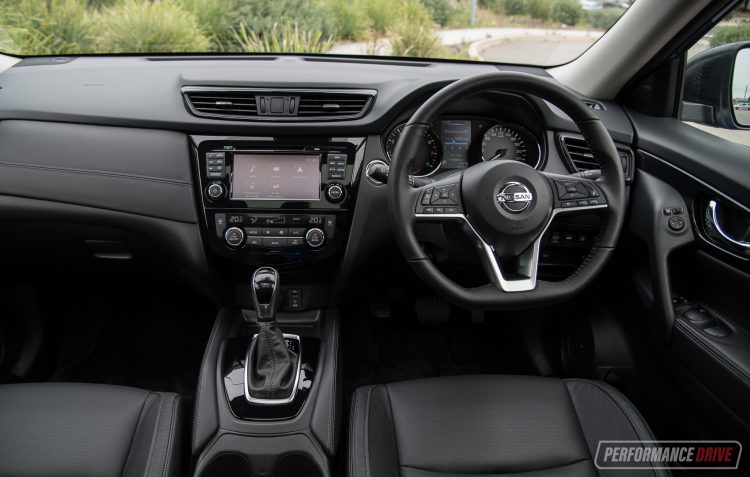
On the inside, you get the sense that the rugged legacy has stuck more than the exterior. It’s quite conservative and more hard-wearing than elegant. But it’s practical. There are loads of spaces to park your belongings, and the cabin feels tall and upright like a traditional 4WD.
The X-Trail in base form comes with cruise control, a six-speaker sound system with Bluetooth connectivity, a reversing camera, push-button start with key proximity locking, LED daytime running lights and LED taillights, 17-inch alloy wheels with a space-saving spare wheel, forward-collision mitigation, and auto headlights.
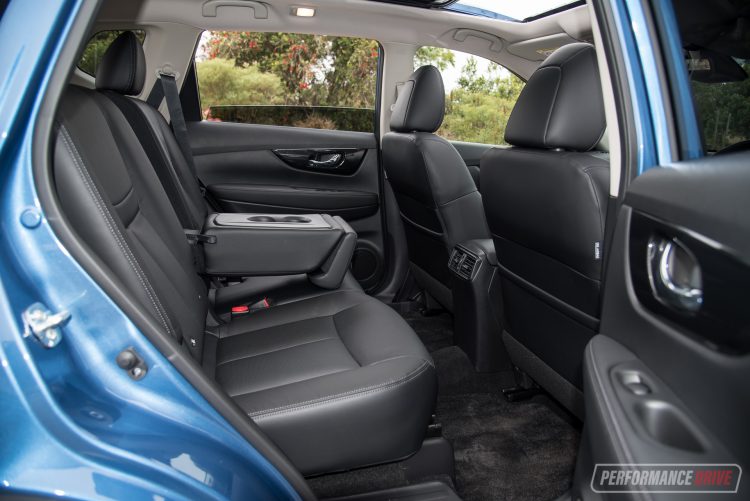
The Ti gains 19-inch alloys, dual-zone climate control, blind-spot sensors, a 360-degree camera system and rear cross-traffic alert, lane departure warning with lane-keeping aid, distance-controlled cruise control, heated and electric front seats, heated second row seats, sat-nav, active cornering LED headlights, a powered tailgate, and a more premium eight-speaker Bose sound system with digital radio. You also get a sunroof as standard.
One of the biggest selling points for the X-Trail is the amount of cabin space. It is one of the biggest SUVs you can get for the price. 565 litres in the boot with five seats in place makes it bigger than the Subaru Forester’s 498 litres, the Hyundai Tucson’s 488 litres, and the Mitsubishi Outlander’s 477 litres.
And it is one of a select few medium category SUVs that offers a third-row seat option. With seven seats in position, boot space measures 135 litres. There are handy storage drawers under the floor for dirty luggage, and X-Trail’s “EZ Flex” seating system enables the second row to be 60:40 split, folded flat, slid forward or back, and reclined.
Servicing intervals are required at 10,000km or 12 months, instead of the usual 15,000km. Nissan now offers a five-year, unlimited kilometre warranty as well, and five years roadside assistance.
2020 Nissan X-Trail Ti – THE DRIVE
Under the bonnet the Ti delivers a modest amount of grunt with 126kW and 226Nm. This comes from a fairly large displacement, naturally aspirated 2.5-litre, four-cylinder petrol engine. On the road, we find it to be a little underwhelming given it is a near-top-spec model. The biggest drawbacks are the lack of torque on uphill stretches and when hauling heavy loads, in combination with a shrill CVT auto transmission. We previously timed the 0-100km/h sprint in 9.66 seconds in the ST, which is a bit slower than average (according to our performance database), considering the engine size.
By the book, fuel consumption figures rate the X-Trail at 8.3L/100km on the combined cycle. Surprisingly, our average hovered around 8.1L/100km over a 700km test. But we ended up doing more highway driving than city stuff. These averages are not as low as some on the market now. Some SUVs with lots more power and torque offer lower averages. But they are often more expensive vehicles. Thankfully, the engine has the ability to run on the cheaper 91 octane fuel, which helps to keep running costs low.
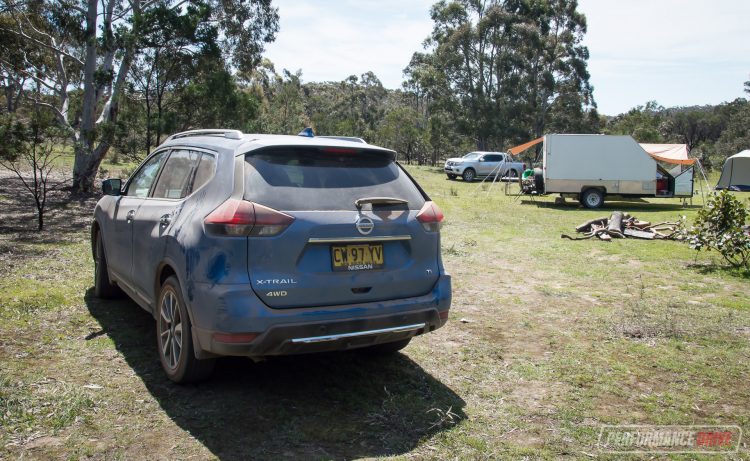
Sadly, if you wish to tow, you may want to look elsewhere first. With a braked towing capacity of 1500kg, the X-Trail is behind some other SUVs in this class. For example, the Hyundai Tucson 1.6T AWD offers 1600kg, and the Mazda CX-5 2.5 AWD and Subaru Forester 2.5 AWD offer 1800kg.
The Ti is one of the variants that automatically comes with on-demand 4×4. There are different drive modes to choose from to help battle the terrain you’re on. We took the X-Trail on some rough dirt tracks and were pleased with its performance. The suspension takes on holes and ditches well, and vibrations are brilliantly suppressed.
Underneath, there is independent strut front suspension and independent multi-link rear suspension with both front and rear stabiliser bars. 210mm of ground clearance also provides an adequate gap to prevent bottoming out, or scraping gutters in the city if that’s where you intend to use it.
2020 Nissan X-Trail Ti – THE VERDICT
The Nissan X-Trail has evolved over the generations from a rough-and-ready SUV to a tamer and more pleasant family-friendly proposition. It still boasts a spacious cabin, and remains as one of the better value options out there. It’s very well balanced; you get practicality and hard-wearing materials for country adventures, but also something that’s not too truck-like for fast-paced city environments.
One of the biggest selling points of the X-Trail is the option of seven seats. Many budget-conscious buyers flock to the X-Trail as it is one of the most affordable seven-seat SUVs on the market.
The current shape is starting to look long in the tooth – especially on the inside – with a new generation due next year. However, sometimes the best models are the ones that have been out for the longest, so any issues can be ironed out over the years with mild updates. And there are some bargain drive-away deals running at the moment, too.
[column width=”47%” padding=”6%”]PROS:
– Lots of interior space for this class, and 7-seat option
– Great value
– Still retains some of the rugged feel and adventurous features; boot storage drawers
– Adequate off-road performance
[/column] [column width=”47%” padding=”0″]CONS:
– Ageing model – new model out next year
– CVT auto sounds droned and shrill
– Space-saver spare tyre on an adventure SUV
– Power and torque falling behind class standards[/column][end_columns]
As always, if you’re thinking about buying a new car don’t forget to click here to speak with our car buying specialists.
